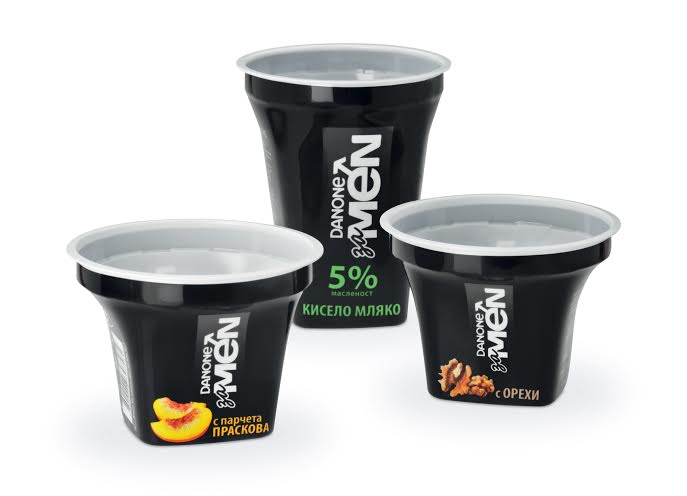Launched onto the market three years ago, shrink films based on Styrolux® HS 70 have now become well-established in the European sleeve market.
Compared to conventional mixtures of SBC (styrene butadiene block copolymer) and PS (polystyrene), this material stands out for its very high final shrinkage of more than 70 percent.
BASF researchers have now developed even further improved Styrolux grades with an eye towards expanding the product line for this application. They have done so in response to the industry’s desire for stiffer films that allow even larger, more complex objects to be shrink-labeled and the thickness of the sleeve film to be further reduced.
Two-component system for more individualized films
A two-component concept that differs from Styrolux HS 70 is being implemented for the first time: with Styrolux T (T = toughness) and Styrolux S (S = stiffness), this concept offers two new Styrolux grades with which the desired property profile of the shrink film can be set when the processor blends them, and only once they are put together do they yield the film material “Styrolux T/S”.
This concept has already received very positive first feedback from film manufacturers. The combination of the two newly developed Styrolux grades now allows manufacturers themselves to adapt the film properties to their specific requirements – a first in the realm of shrink sleeves. BASF experts provide the requisite assistance so that film manufacturers can fully exploit the potential of this development.
Natural shrinkage even lower: Higher storage stability
In the blended T/S products, the T component provides basic properties such as toughness and good stretchability, while the S component improves the stiffness of the film as well as its storage stability. The latter is determined by the so-called natural shrinkage that the material undergoes after the stretching procedure. This value is ascertained in a 21-day storage test at 40 degrees Celsius [104 degrees Fahrenheit]. A one-to-one mixture of Styrolux T and Styrolux S, for instance, yields a film that is 25 to 30 percent stiffer and that exhibits a natural shrinkage that is about 50 percent less than a corresponding film made of Styrolux HS 70.
Greater stiffness – high final shrinkage – lower gel content
Films made on the basis of Styrolux T/S exhibit an unparallel level of transparency and brilliance. Like Styrolux HS 70, Styrolux T/S films are particularly well-suited for the technology of transverse stretching (TD = transverse direction). TD films allow shapes having widely varying radii or unusual designs to be shrink-labeled by sleeve technology.
The new product formulation has succeeded in retaining the familiar, well balanced shrinkage curve of Styrolux HS 70, along with a very high final shrinkage of more than 70 percent at 90 degrees Celsius [194 degrees Fahrenheit]. The uniform, moderate rise of the shrinkage curve permits well-controlled shrink-labeling over a very broad processing range, whereas the high final shrinkage makes it possible to decorate even the most complex of shapes.
Like Styrolux HS 70, the T/S film products stand out for very high efficiency and processing reliability. Owing to the relatively low density, approximately 30 percent more film per kilogram of plastic can be produced than, for example, with PET-G. Moreover, when provided with higher percentages of the S component, the Styrolux T/S films can reach the level of stiffness of PET shrink films.
The two-component concept and the systematic adjustability of the film properties in terms of toughness and stiffness have enabled BASF to respond to customer demands, to their system concepts and to the brand owners, all of which vary considerably from one region to another.
The gel count of Styrolux HS 70, which is already very low, has been reduced even further in the films based on the innovative Styrolux T and S components, thanks to their high thermal stability. T/S films thus meet the requirements of even the most demanding markets.
New perspectives for MD technology
The new Styrolux T/S films not only are suitable for transverse stretching processes but, as so-called MD films, they also yield high-quality products. Stretching films in the extrusion direction (machine direction = MD) as is done in band labeling technology is simpler from the standpoint of the machinery employed and thus correspondingly cheaper. With the roll-on-shrink-on method – ROSO for short – the film label is wrapped around the bottle in the form of a band, fixed by glue and then shrunk onto the bottle under the effect of heat.
When it comes to the products, the ROSO method used to be limited almost exclusively to polypropylene (PP) and to just a few suppliers. The low shrinkage of classic PP-MD shrink films – 20 percent at the maximum at temperatures up to 100 degrees Celsius [212 degrees Fahrenheit] – restricted the use of this method to bottles with simple shapes. Due to its low shrinkage, a PP-MD film cannot tightly enough hug the contour of complex shapes that have greatly varying radii. Creases are formed and the band label does not adhere properly.
The new T/S shrink-film products, but also the proven Styrolux HS 70 and the highly transparent Styrolux grade 3G 46 first introduced onto the market in 2006, open up completely new perspectives for the MD method. These films can achieve shrinkage levels of as much as 45 percent at temperatures of up to 100 degrees Celsius [212 degrees Fahrenheit], and even up to 65 percent at temperatures between 100 and 120 degrees Celsius [212 to 248 degrees Fahrenheit]. In this context, shrink films based on Styrolux 3G 46, which only reach their maximum shrinkage at a temperature above 100 degrees Celsius [212 degrees Fahrenheit], are especially easy to process in hot-air shrink tunnels. MD films on the basis of Styrolux HS 70 or of the new T/S components already attain their highest shrinkage at lower temperatures. This is why they lend themselves for shrink-labeling in steam tunnels.
The significantly higher final shrinkage of the MD Styrolux films means that it is also possible to tightly shrink-label complex shapes such as contoured bottles that have large radius differences, a realm that up until now had been the exclusive domain of TD sleeve films.
In cooperation with leading machine and film manufacturers, it could be demonstrated that Styrolux MD films run very smoothly on existing labeling stations that currently work almost exclusively with ROSO-PP films. Moreover, newer methods such as the hot-sealing of the seams on laser equipment made by the Italian company Sacmi or the hot bar sealing method of Alfa Sidel all yield very good results with Styrolux MD films.
Attractive market segment with growth potential
In view of the current global market volume of more than 3.5 million square meters and estimated annual growth rates of well over 10 percent for the coming years, shrink films are an extremely attractive segment of the packaging market for consumer goods. More than 80 percent of these films are used today in high-quality packaging for food items such as dairy products, soft drinks and alcoholic beverages. In addition, growing numbers of household articles, cosmetics and pharmaceutical packaging are being shrink-labeled.
The driving force behind this dynamic market development are the rising expectations in terms of product differentiation, branding and the scope of information provided to consumers, as well as the wish for an ever more sophisticated presentation of the final-consumer products at the point-of-sale.
Thanks to BASF’s newly developed two-component product system Styrolux T and S, which pays close attention to customers’ demand for higher flexibility and which can be adapted to the various shrink-labeling technologies, the company sees very good opportunities to contribute to the growth of this segment. The two-component concept, which had not been available on the market up until now, sets new quality standards and taps into new application possibilities for sleeves and pa
rticularly for ROSO films.
BASF anticipates that it will already be exhibiting the first items shrink-labeled with Styrolux T/S film at the 2010 K show. Starting in early 2011, these two sleeve film components are intended to become available in commercial quantities throughout the world.
Source : ides.typepad.com








